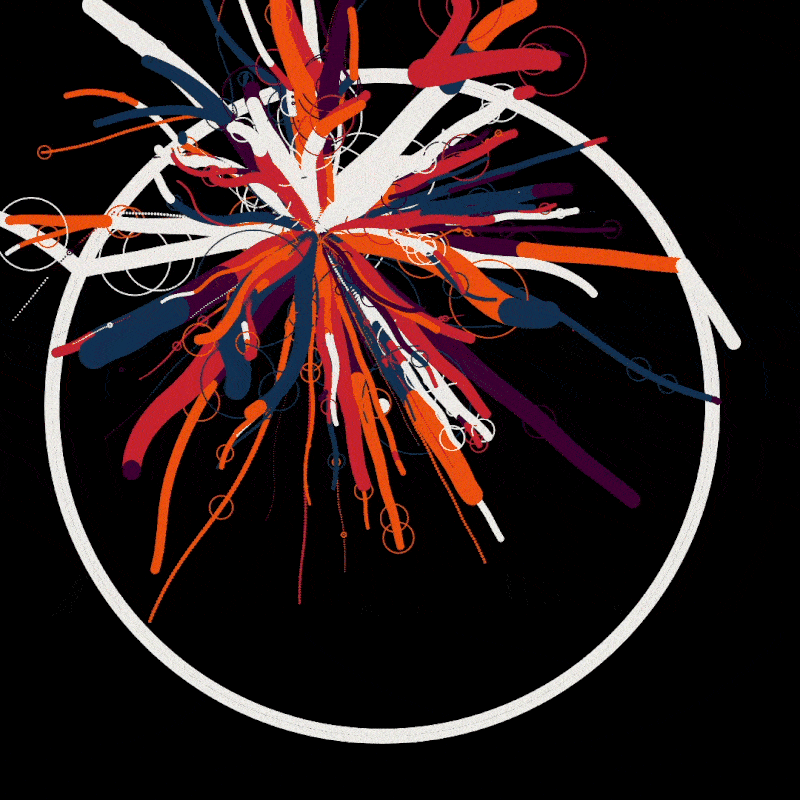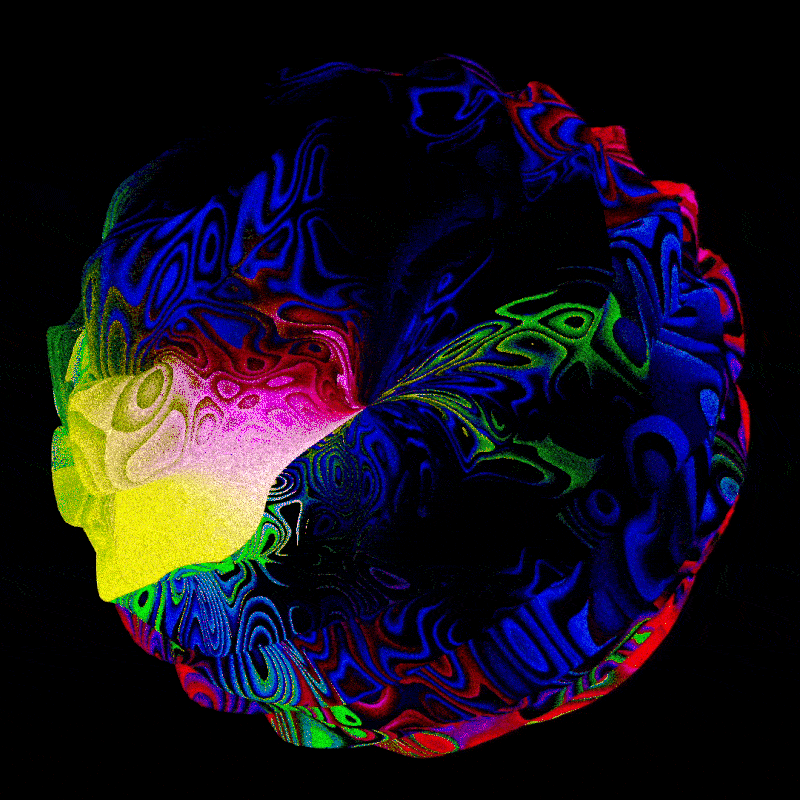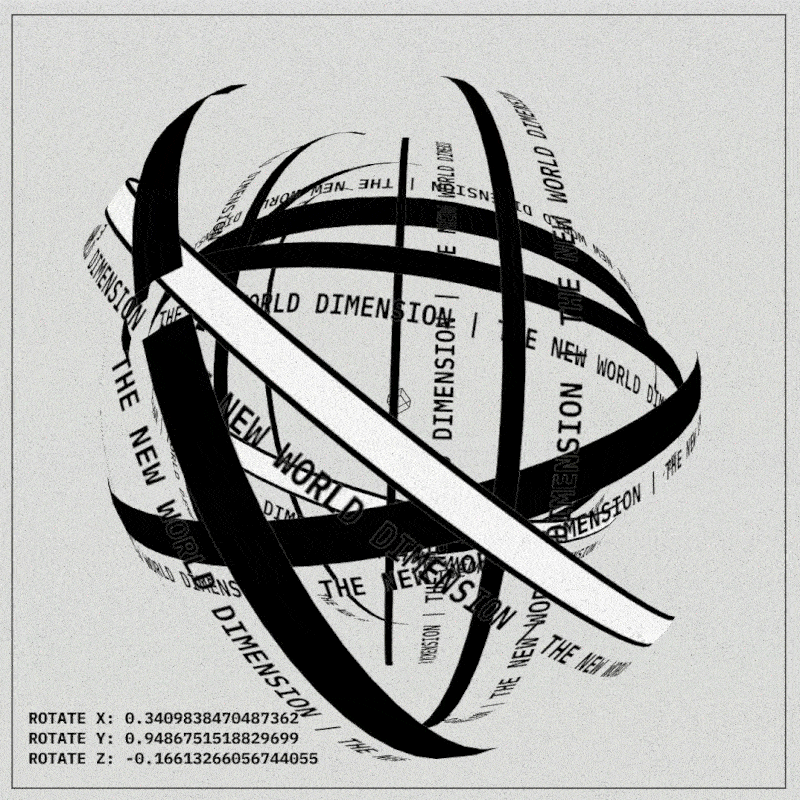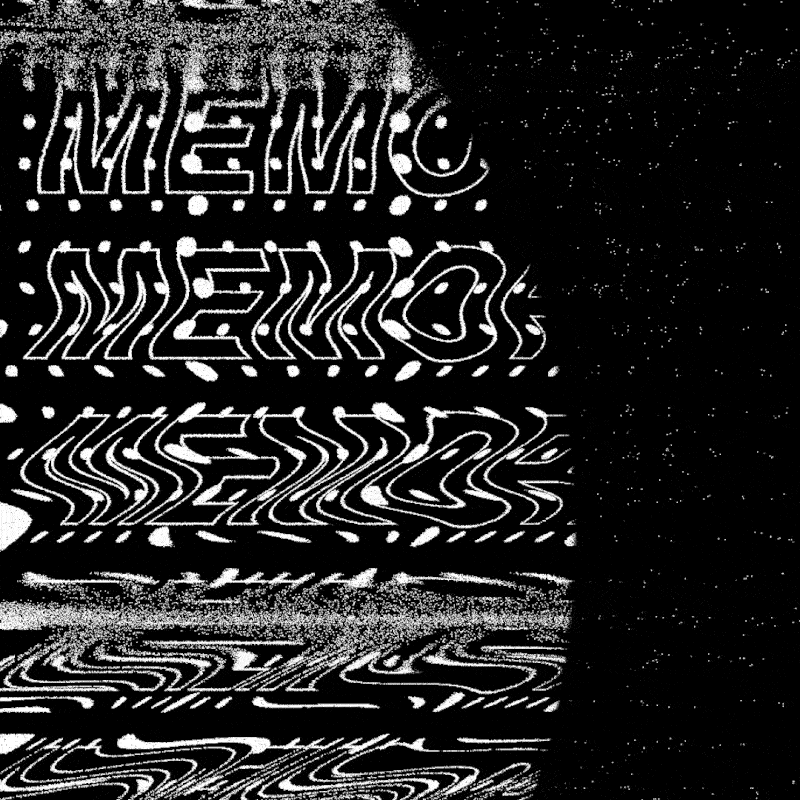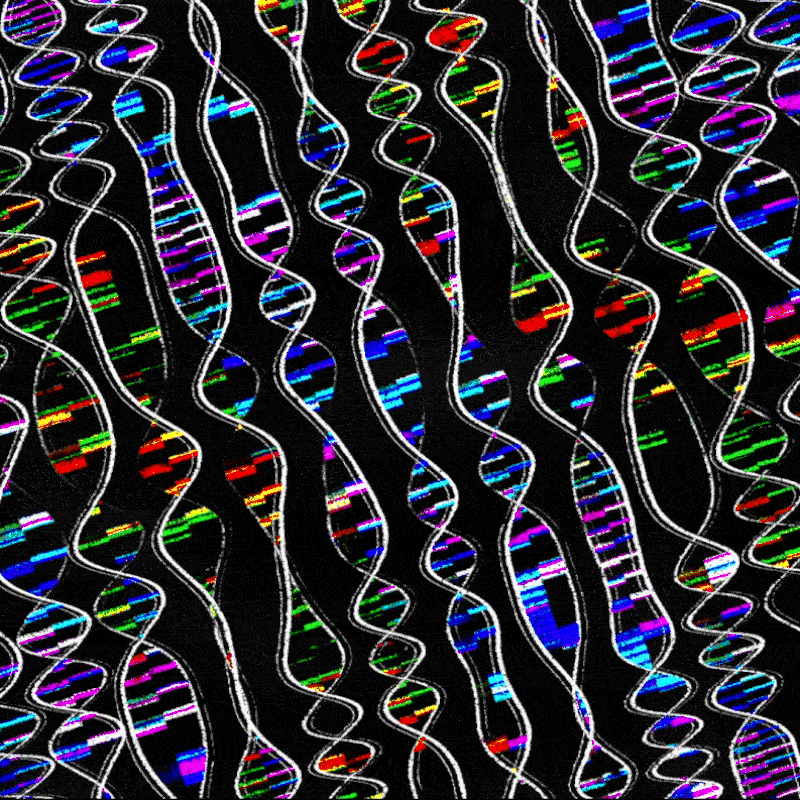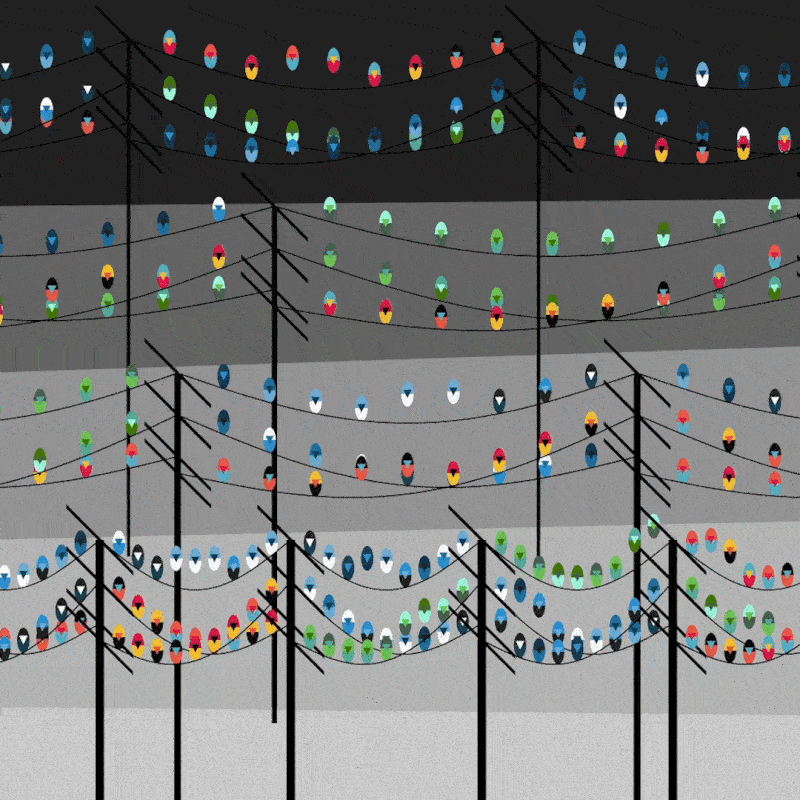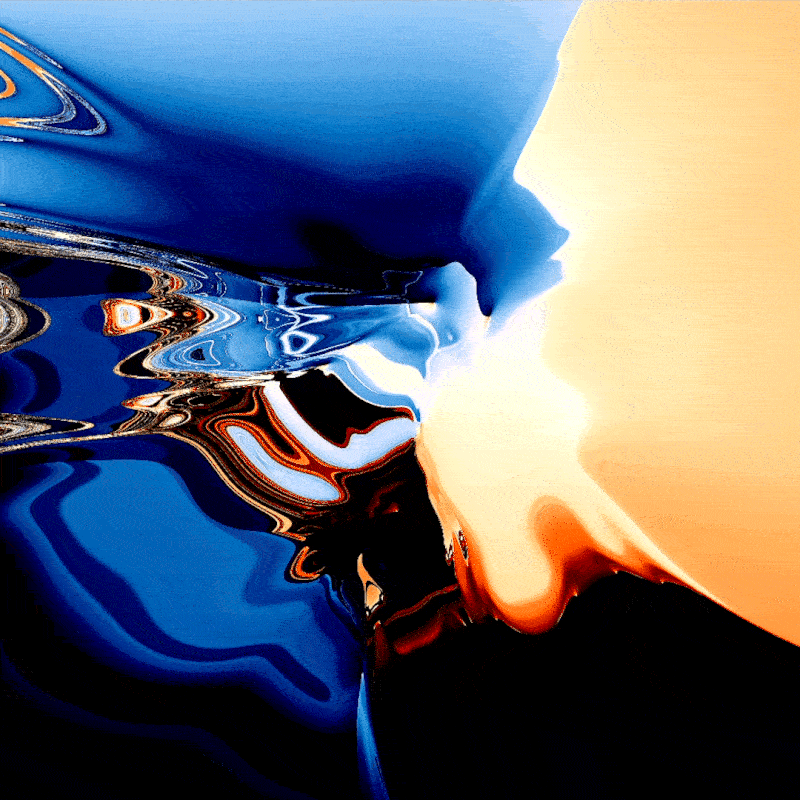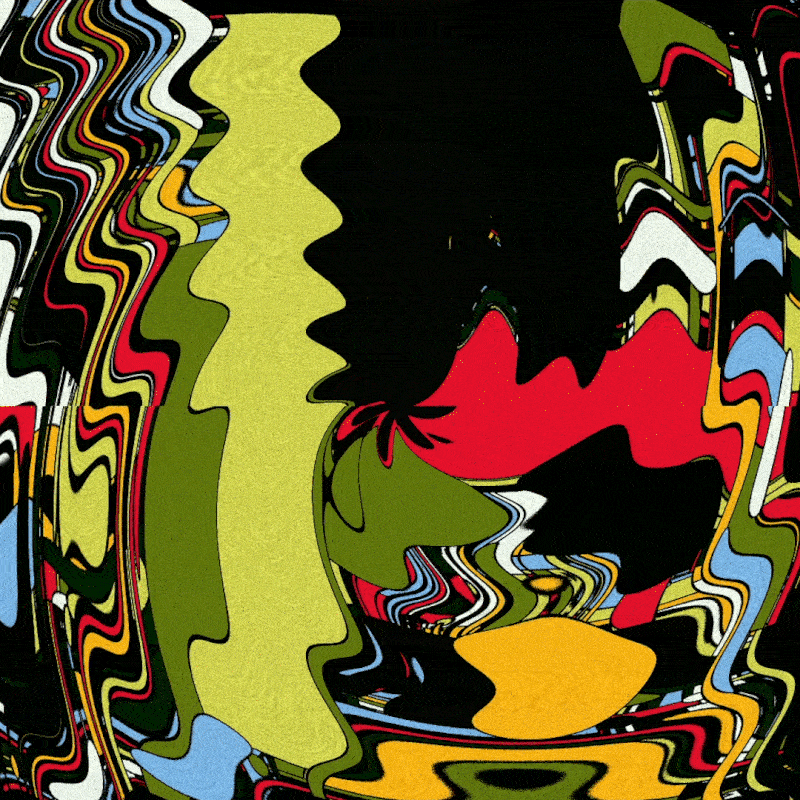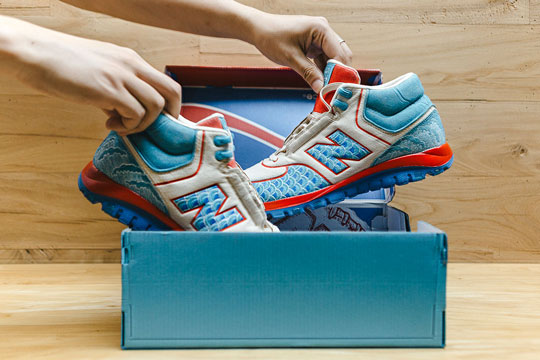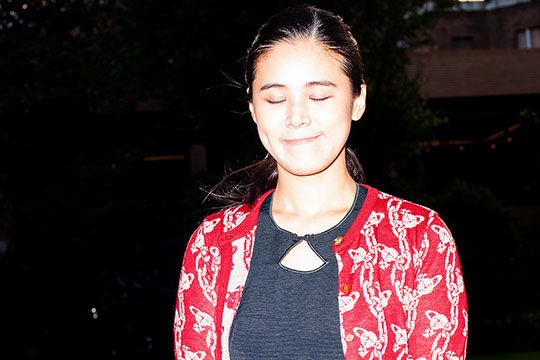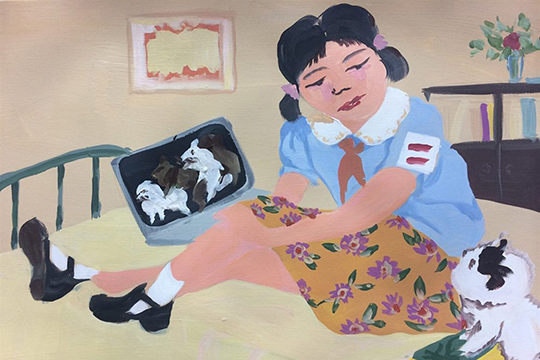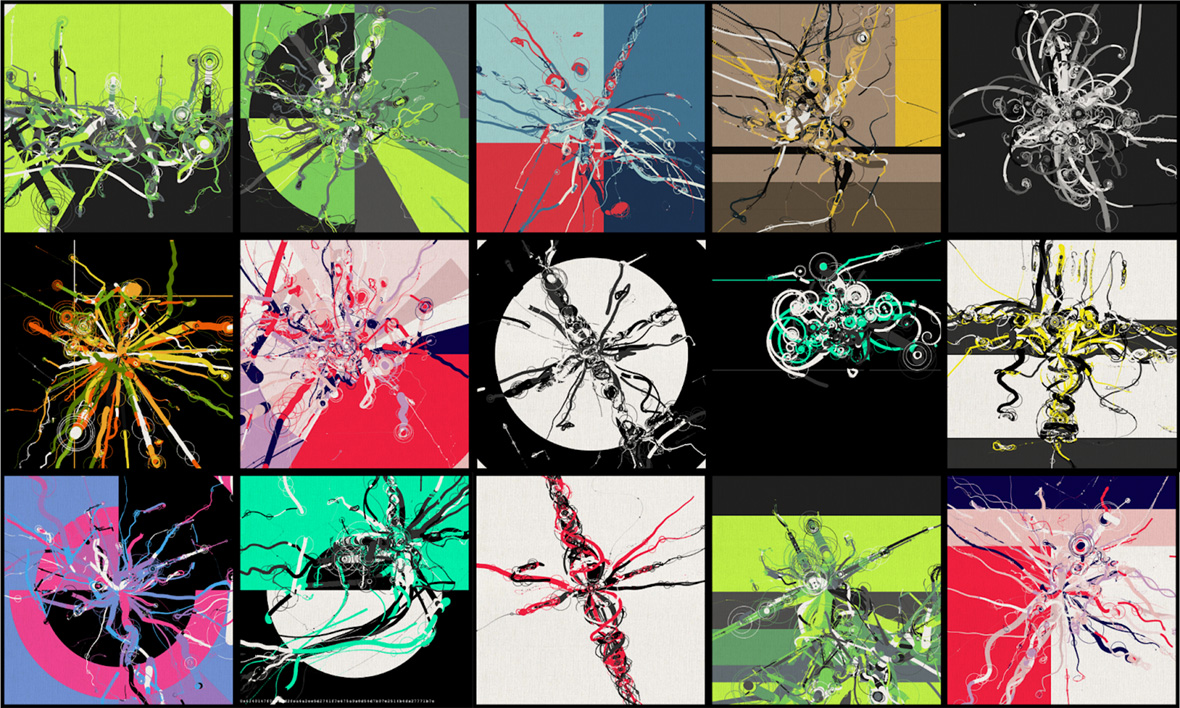
What might art created by an algorithm look like? When a human is no longer creating their own art but simply overseeing a machine’s take on their idea, can a creative vision still be achieved with fidelity?
Wu Che-Yu is a Taiwanese new media artist seeking the answers to these questions. Working within the digital ether of 0s and 1s, he approaches art with a playful zeal. Endlessly experimenting and pushing the limits of technology and art, he seeks to uncover the beauty within the chaotic flow of today’s information overload.
如果把艺术创作交给算法,交给看起来冰冷的机器,结果会变成怎样?当人不再是艺术作品的“施工者”,而是变成“监工”,控制机器去描绘出自己脑海中的灵感蓝图,这些机器们又能否交上一份满意的答卷?
来自台湾的新媒体艺术家吴哲宇(Che-Yu Wu),就在这片 0 与 1 的海洋中遨游了数年,希望通过不断的实践,找到埋藏的答案。他形容自己是“带着小时候玩游戏的干劲去玩艺术”,并在这片艺术分野不断前进、探索,挥洒自己的艺术价值,在混沌的信息流中不断探索着遁匿于其中的新美感秩序。
With the right arrangement of code, Wu conjures fantastic scenes blanketed by colors and patterns. Shapes flow and pulsate to their own rhythm, flickering and gyrating with choreographed precision like living organisms. Certain works even respond to a user’s mouse movement, whether it be the speed that the cursor glides across the frame or its position within the frame. Some elements move leisurely, expanding and sliding. Others move with unpredictable impulses, colliding with each other and bouncing off the boundaries of the frame. In some scenes, visuals from real life have even been reimagined in a digital format: birds drawn in geometric colors bounce atop power lines, underwater creatures battle for food and territory within the briny deep, and cloud-like sheep float through the scene. These virtual beings, constructed through code, form a digital ecosystem that seems to thrive.
在创作软件中敲好代码,按下运行键,他就能带你进入一个全新世界:色彩鲜艳的几何图形,依照着各自的节奏,与线条交织起舞,噪声赋予了它们动态与实感;在屏幕上随机分布的粒子,像被赋予生命一样,循着不定的轨迹野蛮生长;用户的鼠标成了可移动的聚光灯,文字在三角函数的指挥下扭曲、跃动;由色块组成的鸟只,闲挂在晴空下的电线杆上;海潮涌动,鱼儿争食,蜗牛赛跑,梦里数的绵羊在电子流中漂浮,惬意又自如——这些被二进制机器码构筑的虚拟实体,有序又融洽地构成了赛博大自然。
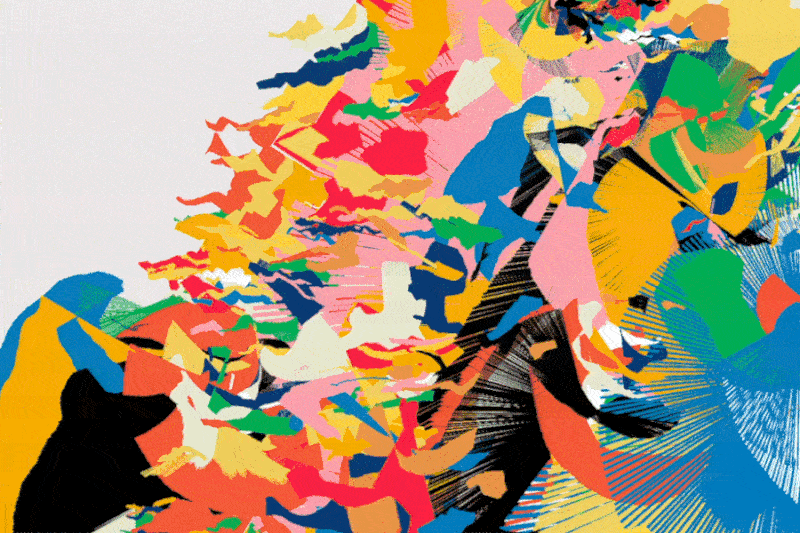
Wu works in the realm of “generative art,” a genre defined as art that’s been created with the use of an autonomous system. By manipulating the perimeters of the code, an artwork can be born from the digital ether. It’s a process that allows for infinite possibilities. The technique can be applied to motion graphics, 3-D art, or even music. The unpredictable results of the medium have been embraced by artists, designers, and even architects—it has also found footing in the NFT space in recent months.
Generative art is hardly a new concept. The term was first coined in the 1960s, and it found a resurgence with the embrace of the Y2K aesthetic. Now, with the proliferation of NFTs and chatter around the Metaverse, the niche art form is making a comeback.
With this renewed interest in the field of generative art, digital artists are again starting to meditate on its potential and how it can contribute to the art world. Computing researcher and artist Jon McCormack proposed a series of questions on the matter. Can human aesthetics be formalized? What can computational generative art tell us about creativity? What future developments would force us to rethink our answers? As more people start considering the boundary between real life and the virtual, the merits of computer-made art are starting to become more obvious to people, including Wu.
We recently caught up with Wu to discuss the implications of artificial intelligence and the development of code-based art.
他介绍,这种技术叫“生成艺术”,通常指使用机器或计算机自动化技术(或通过使用数学逻辑)来定义一系列的规则,再通过执行这些规则,来生成一件艺术品。这种技术能构建出无限变化的动态复杂系统,产生独特且不可重复的事件,范畴涵盖图形动画、音乐交互、 3D 对象等。也正因为其不确定性,被艺术家/设计师建筑师所青睐,如今更成为 NFT(非同质化代币)的主要实现技术。
生成艺术早已不是新词,从上世纪六十年代计算机图形自动化的热潮开始追溯,到千禧年代新媒体技术的崛起,再到最近元宇宙、NFT 的概念盛行,这个并不起眼的艺术分支,已经默默风靡了五十多年,并无微不至地渗透入我们的日常生活中。
这股浪潮的袭来,催生了无数数字艺术家们的思考,如学者 Jon McCormack 就提出过几个经典问题:人类美学可以形式化吗?我们如何才能对生成艺术形成更批判性的理解?未来快速的科技换代,会迫使我们重新思考我们的答案吗?越来越多人开始思考“虚拟”与“现实”的交织关系,也悟出了自己的心德,吴哲宇也不例外。
借此机会,我们还与哲宇围绕控制论与人工智能、生成艺术与 NFT 等话题进行了一次深度对谈,在对谈中我们发现,哲宇不仅对技术颇有心得,对业界生态的发展、年轻艺术家的培养方面也很上心。下面,让我们一起走进这位“数位魔法师”的世界。
Neocha: When did you first start working with digital art?
Wu: In elementary school, I was already playing around with Adobe Flash. In middle school, I took part in a digital art competition held by Acer, and I won first prize with an animation I made in PowerPoint—the award was 30,000 NTD. It was incredibly encouraging. In college though, I focused on computer science. I coded web pages after school and ended up collaborating with the Taiwan Metro-Rail System and the Palace Museum on a few projects. After graduating, I started my own design studio. I actually got into generative art because there was so much demand for it, so I wanted to learn. I’ve worked in Processing, TouchDesigner, and more. Even though it was all kind of goal-oriented at first, the exposure to these different mediums helped me gain new skills that I could then apply to my art.
Neocha: 你是从什么时候开始接触这个领域的?
吴哲宇: 我小学在电脑课上就有玩 Flash,后来国中的时候去参加了宏基的数位创作比赛,那个时候我用 PowerPoint 做了一个动画拿了冠军,奖金是30万台币,给我鼓舞很大。不过大学的时候我读了电机系,只在课余时间会自己写写网页,到后来帮过像捷运、故宫博物院这样的大机构做过专案,然后我就创立了自己的设计工作室,算是正式踏入业内了。具体接触生成艺术,还是因为之后有这方面的设计需求,所以我就去学了。像 Processing、TouchDesigner 这种我都有接触,算是目标导向去学东西,然后意外拓展了新技能吧。
Neocha: What would you consider as the biggest catalysts in your creative and professional life?
Wu: When I make generative art, I work with trigonometric functions, which is very much related to my original field of study—especially now that I’m experimenting with music. It’s curious to see how these two different worlds intersect.
After graduating, I enrolled in the Integrated Design & Media Program at NYU. It was there where I discovered that creative coding was already thriving in the States. My interactions with artists in New York also taught me that there’s a certain intuition that Western artists approach art with, whereas I’ve always been more “rigid” in my art making. It wasn’t easy getting used to it at first. Some friends at the time also told me that my works felt too logical and stiff, and that it lacked a certain artistic spirit. I didn’t really heed their opinions. I thought that great art can still be made with a cerebral and structured approach, so I stayed the course.
I wanted to get a job at the university so I could get my social security number. I applied as a UX designer at the school’s IT department, but I didn’t hear back. Fortunately, I saw that they were hiring for a teacher’s aid position at the time. I thought it could be interesting and sent my resume in. I was hired. I learned a lot working as a TA. At the time, I felt like education was truly a magical thing, and that being able to nourish minds was such a tremendous achievement. I started designing some curriculums of my own at the time and had great feedback. That’s when I started to become interested in helping cultivate a new generation of artists.
Neocha: 有没有哪些因素对你的创作,或是说整个职业生涯影响很大呢?
吴哲宇: 创作的话,我做生成艺术的时候,经常要用到三角函数以及相关的技术去处理数据,这和我本科学习的信号处理课莫名就联系上了(尤其我现在也有结合音声来创作),就感觉两个不同的世界突然联通了,很奇妙。
还有一个是,大学毕业后,我去纽约大学读了 IDM(综合数字媒体)的研究生,那时候我发现原来Creative Coding(创意编程)在那边已经不是什么新鲜事情了。我注意纽约的艺术家创作时都喜欢用很感性的思维,而我对于艺术一直是比较“正经”的理工气质,有时就会不太适应。早期的朋友也经常和我说,我的东西好理工,没那么有艺术感。但是我不太信邪,我觉得用有条理、有规则的思维,用规定的算法也可以创造出与传统艺术家相媲美的作品,所以我不停实践。
另外就是因为我很想在学校里面找到工作,早点拿到我的SSN(社会安全号码),就投了学校IT部门的UX设计师,结果杳无音讯。我刚好看到我们系也在找TA(助教),就想着边做边学应该是不错的事情,投了简历试试看,结果通过了。当助教的时候收获了很多,那个时候我就觉得教学是很神圣的东西,培养新人真的很不简单,后来就尝试着自己做一些课程,也收到不错的反馈,让我更关注下一代艺术家的培养了。

Neocha: Considering how closely you work with algorithms and computers, how has your view of the relationship between humans and machines changed over the years?
Wu: In general, the rise of machines and AI will “devalue” humans to a certain extent, as can already be seen with mechanized labor and the automation of data processing. As far as art is concerned, I don’t think machines can replace the human touch. Even though there’s AI that can generate art on its own, the value of a piece of art—in my opinion—is that it encapsulates a human’s subjective view of the world. The art I make, for example, is directly influenced by my personal stories and state of mind. I think such ideas cannot be reproduced by machines and neural networks. In other words, I don’t believe human aesthetics can be formalized.
If I had to guess, society will also adapt to this age of AIs. Similar to how it plays out in science fiction, there will be certain people who will control the AI, perhaps somewhere close to 20% of the total population. These will be the most intelligent people who will continue to work alongside AI and inject their output with human warmth and an artistic touch. We’re already using AI as a tool today. With my art, AI is a tool that helps me achieve my vision.
I’ll write the program and compile the code, which might churn out somewhere between 10 to 50 different images. I curate from those, discarding the rest—this part alone is something that only humans can do. Real experiences drive my art. For example, sometimes I might create based on a feeling of dejection in my art. Or a memory of a fantastic date might inspire me to make something. Confusion and uncertainty can also spark an idea for an artwork. The movement of the elements within my art, the colors, the particles that appear and how they split apart, and the speed that everything move at are all based on my personal emotions. Machines don’t experience that—they’re too perfect. Humans, however, are flawed creatures and good art can come from these flaws.
Neocha: Where do you find inspiration from?
Wu: In the beginning, I didn’t have a system for my art. It was just random ideas. I then started to approach it with a more traditional perspective, drawing from observations or experiences from my daily life, such as is the case with Pigeons on a Power Pole. That was just a scene I came across while walking and decided to reinterpret in my art. Some of my other works are inspired by science and physics, such as my works based on wave-particle duality or superstring theory. I’m really interested in turning mathematical or scientific theories into something visual—there’s a certain romance to it.
Neocha: 你的作品创作十分依托计算机。广泛来说,你如何看待机器与人之间的关系?尤其在创作层面。
吴哲宇: 我觉得普遍来讲,机器的诞生,尤其是近几年人工智能的火热,必然会使人类失去一部分活动的价值,比如机械化劳动、数据自动化处理等等。但是就艺术而言,我觉得机器还不足以冲击人类存在的价值。哪怕现在已经有可以自动生成作品的AI,但一件艺术作品,贵在融入了人对世界主观的看法。就像我创作的作品一样,背后蕴藏着我当下的心境与故事,这种“富有生命气息的想法”,我想不是靠数值演算和神经网络就能复现的。也就是说,人类美学不能被完全形式化。
而且我猜想,人类社会也会因此产生适应性。我想,就像科幻小说一样,在未来人类会被“极端化”,只有20%的组织型人才能能够驾驭AI,这少数的人会从事高脑力活动,输出人特有的价值观,附有艺术家一般的特质。实际上我们现在也是在利用AI帮助人类完成任务而已,它的工具属性是比较强的,在我这里机器就是工具。每一份作品都是基于我的思维,借由机器的手去实现的
比如,我会写好算法,丢到软件里,每幅作品生成10-50张截图,把好的选择下来,这个选择过程是主观的,是人才能做到的;比如我曾经被诈骗,我把这份难过的心情融入到我的作品中;我去约会很开心,又会弄一副作品;当下感到迷茫也会弄一副作品……作品的动态、颜色、粒子分布,乃至于每个粒子的动量、速度,都是根据我当下心情去改变的。人总是有两面性存在的,不完美才是人,机器太完美了。
Neocha: 能做到几乎每日一码是很难的事情,你的灵感都来源于哪些方面?
吴哲宇: 一开始我都是没头绪乱做的,但是后来找到了比较系统化的创作方法。我比较倾向于把生活中遇到的各种事情“截图”,像《电线上的鸽子》,就是我走在路上捕捉到的景象,我把场景记在脑海里,又重新具现化出来。像其他作品,大多是我的理科素养驱动的,比如波粒二象性、超弦理论,都是源于我学到的物理概念。我觉得将各种数学、物理的理论可视化真的非常酷,这是一种“理科生的浪漫”。
Neocha: Do you ever feel creatively exhausted? Are there moments where you suddenly feel like it’s tough to keep going?
Wu: It’s not always easy, but good art requires a lot of effort. After years of toiling, I believe I can now engage in honest dialogue with my art. Once I come up with an idea and have a preliminary sketch in place, I can start working on the creative nitty-gritty right away. The technique is important, and it’s something I’ve honed by coding day in and day out. The rules I apply to my coding is something that follows me into my artistic endeavors, and it’s an aspect that defines my personal style.
Neocha: What would you say some of the most important technical parts of your work are?
Wu: There are a few, and they’re apparent in my work. Some of the philosophies I work around are that uncertainty and bedlam can be valuable in the creation of multidimensional works. For example, having offset coordinates in my code can give the works that much more motion. Color is also important. Using color contrasts for visual impact is a big part of my creative process. For example, a lot of blues might suddenly give way to a lot of reds in one of my scenes. Layering is also something I take into consideration, both with colors and textures. Unexpected color or texture pairings can lend to some eye-popping results. These are all criteria I think about when I design or analyze my art.
Neocha: 在这个过程中会感到吃力吗?有没有一个时刻就突然觉得没必要继续坚持下去了?
吴哲宇: 说不吃力是不可能的。但是我觉得好作品都是要磨炼出来的。经过多年的创作,我现在已经可以做到与作品对话的水平了,基本上我想到什么idea,打一遍草稿,就可以进入到实作阶段了,我觉得打好坚实的技术基础是挺重要的。每天写代码也让我总结出一些创作的技术要点,现在我基本上会将这些规则贯彻到我的作品中,我的不信邪还是有效的,因为这确立了我的个人风格。
Neocha: 那么你目前总结出的数位创作技术要点都有哪些?
吴哲宇: 有几个,基本都在我的作品里体现了,我把它总结成几个规则:第一,噪声与不确定性,这些可以帮助你创造多彩的作品,比如在图形里加入不确定的坐标偏移(offset),就可以让它们动起来。第二,色系操作,简单来说就是经常改变颜色,而且用对比色的话视觉冲击力会强很多。比如某图形最初是是蓝色系,过了一段时间又有几率变成红色系了。第三,多使用叠色和材质叠加。有时一些意想不到的叠色或者纹理复合,可以令你眼前一亮,在千万帧动画中惊呼“就是它了!”的水平。往远了说,这也是我设计作品、分析作品时会依照的标准。
Neocha: There’s a large amount of abstract elements in your works. Are abstract painters a source of influence?
Wu: Definitely. Picasso or Piet Mondrian are artists that first come to mind. The ways they use lines and colors on flat surfaces are incredibly inspiring. Generative art is, in some ways, mimicking Picasso’s way of working in my opinion. I also think that generative art is sometimes more impressionistic in nature—through seeing something, interpreting certain tones, and using an algorithm to hash out the details to convey a certain concept feels a bit poetic to me. With that being said, I feel like generative art is contemporary at its core. It’s an art style defined by freedom.
Neocha: Your art has found traction in the art sphere with the rise of NFTs. What do you think the merits of NFTs are?
Wu: It’s liberating, and it’s lowered the entry barrier to art by a lot. Though that may be the case, to truly stand out as an artist, I think people need to have clarity on what concepts matter. Who are the people you’re making the art for? What is the story you’re looking to tell? Without a story, there’s no substance.
Personal style and nourishing a creative environment are also important in the creative sphere. NFT is helping on both fronts. I also really admire the immutable nature of the blockchain, which legitimizes ownership and can allow for digital property to have limited availability.
Neocha: 你的作品多以几何抽象为主,你是否有受到抽象派风格的启发?
吴哲宇: 当然有。你可以想象一下毕卡索,或者是蒙德里安:线条、色块,全部投影在平面上,其实生成艺术就像是模仿毕卡索在创作。与此同时我认为生成艺术还有点印象派——看到一个东西,截取一种色调,用算法把细节慢慢点出来,点出个大概,其实挺浪漫的。但总体来说,我觉得生成艺术就是现代艺术,他是自由的风格。
Neocha: 真正让你名声大噪的还是你的NFT,你觉得NFT带来的好处是什么?
吴哲宇: 最大的好处应该是自由,创作门槛现在已经变得很低了。不过我觉得,要想真正脱颖而出,你要能搞清楚作品的核心思想是什么,背后的社群、背后的故事才是最重要的。故事赋予了内涵,要么你是第一个吃螃蟹的人,否则逃不过这个定律。
当然了,个人特色、创作生态也是很重要的,NFT 让创作生态变好了,涌现了许多富有个人特色的新锐艺术家。还有一个我觉得是知识产权的保护吧。因为 NFT 有数位证本的概念,所有权是可以被确立的,不可复制而且限量,这点非常不错。
Neocha: For those who aren’t familiar with your work, can you introduce a few of your projects?
Wu: One of my projects is a series called CryptoPochi. It was a remake of an earlier project, but I turned it into something more interactive. They’re strip-shaped characters that bounce and flop around. A lot of the patterns I ended up using were actually randomized by a computer. I used the project to crowdfund money for one of my friends who was diagnosed with terminal cancer.
My best-known series is a project titled Sea Hams, but an NFT collective actually stole my code for Strange Robots and launched a NFT series that went viral on Art Blocks, a site that’s known for its high-quality NFT curation. After I found out about the theft, I spoke to the people at Art Blocks and they helped me deal with the matter. The community was livid. Art Blocks immediately credited me as the original artist, and banned the plagiarizers. Artists bought Sea Ham NFTs from me to show support, and that somehow turned my Sea Hams into the Art Blocks mascot. I became known as the “Hamfather,” and we started a community called “The Hamily.” The incident somehow ended up landing me a spot in the Art Blocks of Hall of Fame.
Neocha: Looking back, how much do you think your success has been factored by luck?
Wu: I’m definitely fortunate. Luck and ability are closely related though haha. I think putting in the effort is a big part of it. Strange Robots, for example, was a series that I worked on every day. Even though there was no interest when I first minted it on Art Blocks.
Art Blocks is a platform that made me who I am, so I’m motivated to give back. Plagiarism is unfortunate but the incident actually helped me find a bigger audience, so I consider myself lucky! I realize I need to leverage my luck by putting in even more effort so that I can keep the momentum going. I want to get my work in front of even more eyes and become a better artist and coder. With enough hard work, I won’t have to worry about falling out of favor. Technology is everchanging after all.
Neocha: 能介绍一下你的几个项目吗?
吴哲宇: 当然。有一个叫 CryptoPochi,这是基于我之前的一个作品再创作的,基本上就是一群像软糖一样蹦蹦跳跳的小东西。我把构成作品的几个要素抽出来,设置多个原生的Pattern(样式),然后把生成的参数随机化,就可以做出很多不同的作品了,这个项目也有帮我一个患癌症的亲友筹款的作用。
不过最出名的当属海火腿(Seahams)了,有一个 NFT 团队盗用了我“Stange Robots”的代码,做出了很火的 NFT,一度成为了Art Blocks 社区里的热门——这个社区以高质量 NFT 策展出名,不是每个设计师的作品都可以登上 Art Blocks。我知道这件事之后,直接就去维权了,社区的人们先是很生气:这么高门槛的社群,怎么会发生抄袭事件呢!随后就是积极帮助我处理这件事,先是帮我确定了原创者的身份,还帮我一起抵制了抄袭方,一些艺术家也会买时不时一个海火腿支持我……海火腿后来慢慢成了 Art Blocks 的吉祥物,我也终于变成了社区里的“海火腿之父”,现在我们还有一个去中心化组织叫The Hamily(火腿家族),用来纪念这件事吸取教训,也给喜欢海火腿的人提供了二次创作的社群。总之,这次剽窃事件处理得很成功,我也突然进了 Art Blocks 的“名人堂”。
Neocha: 现在再看回去,会不会觉得自己能成功,很大一部分是因为运气?
吴哲宇: 这是当然的。运气也是实力的一部分嘛(笑),不过我觉得也和我的努力有关,毕竟 Strange Robots 的程式码也是我每日创作的结果,虽然我一开始把它放上 Art Blocks 时无人问津。我是被 Art Blocks 平台造就的,所以我也会尽我所能去回报它。虽然被抄袭盈利是很倒霉的事情,但因为被抄袭之后我反而得到更多人的赏识,我觉得自己很幸运!这也许是我耕耘了三四年才得到的回报吧。不过,我必须拿出超过这份运气很多的努力,去继续把这个机遇撑起来,一定要用超越两三倍的声量去捕捉粉丝,还要不断更新自己的技术栈(比如我会经常去学习新框架、大量阅读数学、物理研究前沿的论文),避免自己被淘汰,因为科技总是不知道什么时候就变了样。
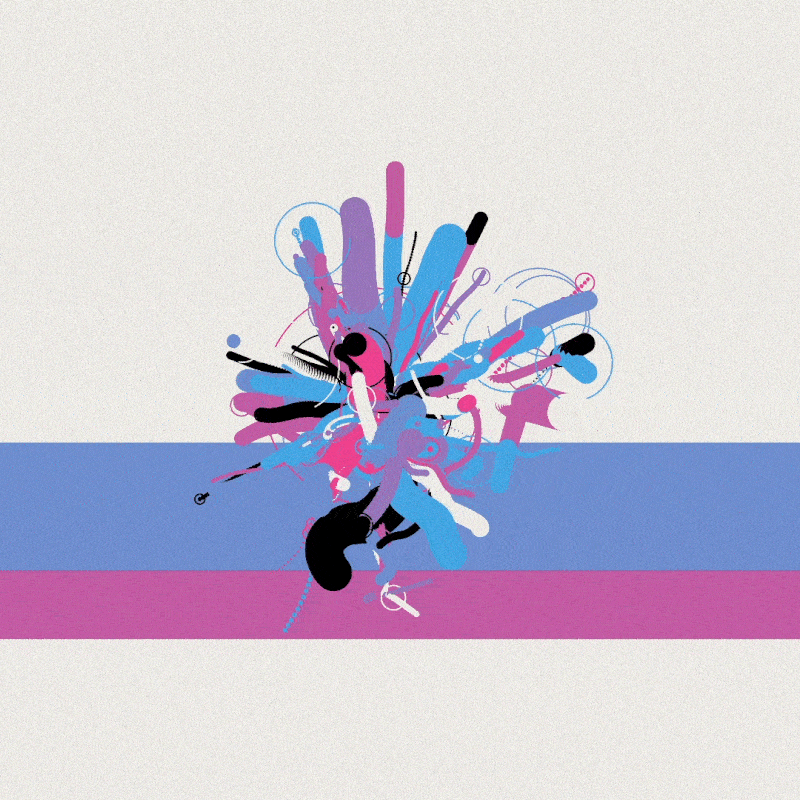
Neocha: The NFT market and crypto are still very much volatile. What are your views on the future of crypto?
Wu: I consider them as viable financial instruments. As long as people support crypto, my art will have value. Normal currency is propped up by governments, so what’s the difference?
In fact, with how blockchain technology works, I’m even more assured about my work. I’m also not super concerned about profitability at this stage. I just want to keep doing what I love.
Neocha: As an established name in Taiwan’s digital art sphere, do you have any advice for young artists who may be interested in getting into the field?
Wang: My advice is for them to experience as much as they can, chase after what they’re truly passionate about. The experiences and stories that come as a result can turn into the most meaningful art. Once you have these roots, you can develop your own system. Having a bit of luck also helps.
I once met this impressive girl who believed in getting everything done herself. She wasn’t afraid of putting in the work and seized every opportunity. Artists need the courage to just put themselves out there.
Neocha: Do you think Taiwan is behind the curve when it comes to the digital art space? What’s your current assessment of the digital art scene on the island?
Wu: There are a lot of burgeoning platforms here, for example, akaSwap and Oursong. There are also a lot of fantastic artists on the island, such as Aluan Wang. I only wanted to get started in the field after reading his blog—he was the first Taiwanese artist who was featured on Art Blocks.
I have to admit though, the Taiwanese NFT platform is lagging behind. For example, most collectors here aren’t quite willing to pay the amount being paid out by international buyers. Perhaps the Taiwanese market isn’t quite ready for something so new yet. Regardless, I still see a bright future for NFTs.
In December of 2021, Wu started a DAO (Decentralized Autonomous Organization), which are member-owned communities dedicated to specific goals He named it FAB DAO (The Formosa Art Bank DAO) and envision it as a way of helping up-and-coming Taiwanese artists. Its goal is to leverage web 3.0 to help lesser-known artists get in front of bigger audiences. The charitable potential of art is something that Wu has learned from Art Blocks, which requests a percentage of art sales to go to charity. Wu wasn’t able to find a suitable art-based charity in Taiwan, so he had the idea to start his own. Like Art Blocks, he hopes to empower the creative community with the blockchain.
With NFTs and the promises of a coming metaverse, an art renaissance is underway. As more artists find footing in the digital world, they’ll unlock creative potentials once not imaginable. And through these newfound mediums, art can perhaps become even more accessible than it is now, allowing for more people to enjoy the fruits of more artists’ labor.
Neocha: NFT的市场仍不稳定,你觉得虚拟货币是你确切的财富吗?
吴哲宇: 我觉得这就是确切的财富。只要人们对虚拟货币的共识一天存在,我的艺术作品就一天有价值。货币本身不也是靠政府的威望去支撑起来的不是吗?而且像虚拟货币,现在一般都是使用分布式系统去存储资信,我想就算哪天全世界大停电我也不害怕,况且也还没到快要饿死的地步嘛!就当是用积蓄去支撑自己的爱好就好了,现阶段我想不去过多计较盈利会是好选择。
Neocha: 你觉得目前台湾的数位艺术创作是否已经起步?行业状况又如何呢?
吴哲宇: 台湾有很多好平台已经崭露苗头了,比如akaSwap 啊,Oursong 之类的。本土也有很多好的艺术家,比如王新仁,我是因为看了他的 Blog 才想要进入这个业界,他也是第一位踏入 Art Blocks 艺术家殿堂的台湾人。不过就目前来说,台湾的 NFT 市场整体上还是慢一拍,比如:台湾目前的收藏者目前出价不高,有可能是台湾市场还没准备好这些新兴的东西,不过我对它未来的期望还是很高的。
Neocha: 你已经算是业界的中坚,对未来的新数位艺术家们,你有没有什么建议?
吴哲宇: 我会建议他们尽情去体验各种不同的生活,去做喜欢的事情,累计属于自己的体验、故事,再转换成作品,价值就会出来。一定要耕耘,形成自己的体系,当然了也需要一点运气(笑)。我曾经遇到一个挺厉害的女生,她想要什么资源就自己去争取,不放过任何的行销机会,总之就是,任何你可以出现、可以展出的机会你都要去,对艺术家来说尤其需要这个勇气了。
另外,随着传统行业慢慢饱和,跨领域现在很重要,它刺激你往外突破,学到什么就用什么。其实这种“乘法效应”非常大,两个简单的想法结合在一起,你就会诞生很多新的想法——认知的排列组合就是艺术,而艺术就是组合的本身。你的每一份作品都可以是问题的答案。
2021年12月20日,吴哲宇在台湾投资成立的福尔摩沙艺术银行(FAB DAO)正式成立,这个去中心化组织,旨在帮助新生代台湾数位艺术家、非营利机构发行 NFT,让它们的作品更多地被看见。
同时,这也是吴哲宇第一次自己创立公益项目:因为 Art Blocks 规定艺术家的盈利有 25% 要捐给公益机构,但吴哲宇始终没有在台湾找到合适的选择,于是他决定自己成为那个领路人——效仿 Art Blocks,为社会公益尽绵薄之力。吴哲宇希望通过此举回馈社群,同时向造就了自己的 Art Blocks 致敬。
元宇宙之前,已经有许多数位艺术家在这片领域大展身手,为世界贡献更多可贵的精神财富与社会力量。我们有理由相信,未来一定会有更多传统与科技的形式出现,覆盖我们生活的方方面面,更多代码被插上奇思妙想的翅膀,在数字帝国里绘制人类艺术的新篇章。
Like our stories? Follow us on Facebook and Instagram.
Website: www.cheyuwu.com
Instagram: @bosscodingplease
Foundation: @cheyuwu
Contributor: Senki Yu

